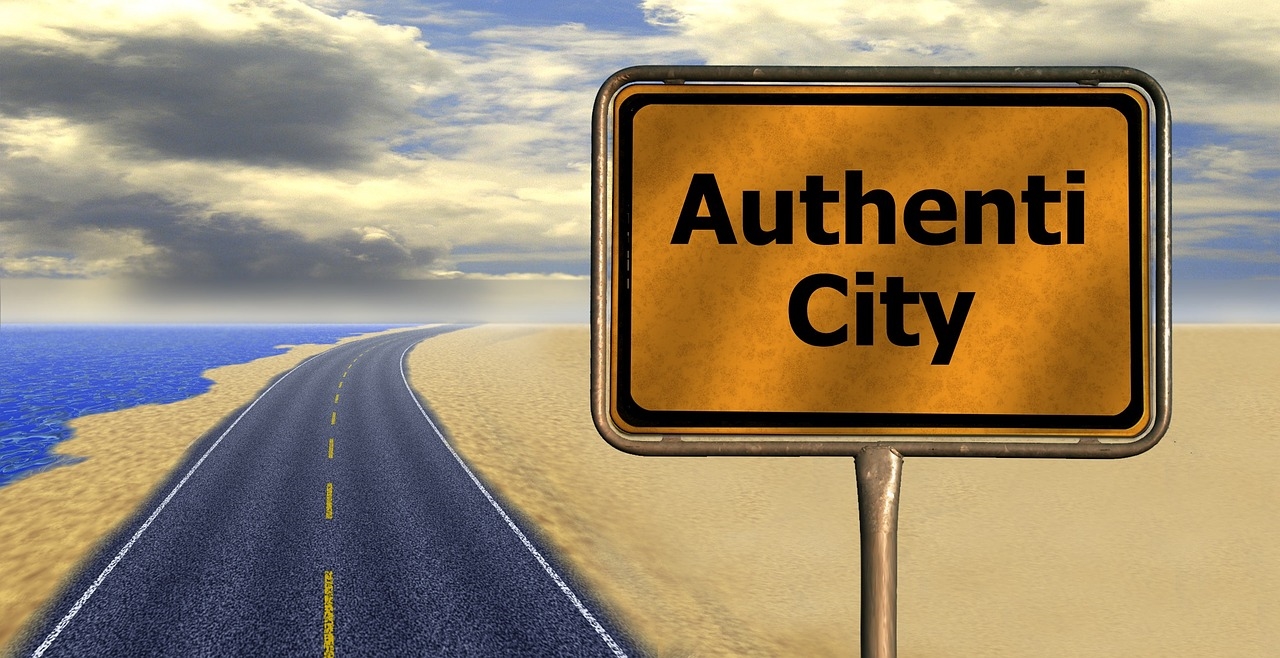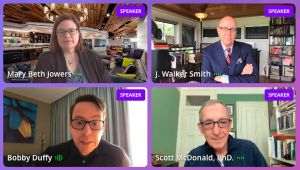
geralt / Pixabay
We’re roughly a year beyond what I’ll call a “corporate awakening” since the death of George Floyd. I’ve been observing the corporate response, and what I’ve noticed is that there’s a spectrum of how companies are responding. On the more performative end of the spectrum, companies have issued a combination of press releases, media interviews and social media posts stating Black Lives Matter and that they need and must do better, but it stopped there. And on the more authentic end of the spectrum companies have went beyond their statements, crossing a threshold and taking the necessary steps of creating public-facing goals, and charting a path to making good on their commitments to communities of color. This of course included greater emphasis on supplier diversity, increased financial support and volunteerism to organizations that are advancing racial justice, how they’re creating goods and services and also elevating voices of color within their ranks. Then of course there are all the companies that fit in between.
Unfortunately, too few companies exist on that authentic end of the spectrum where they’ve developed programming with a more purposeful and intentional strategy to actually achieve positive change. I suspect one of many reasons is because the business units responsible for racial justice, Diversity, Equity and Inclusion (DEI) and the mechanisms that exist around amplifying the voice of diverse communities (both internally and externally) are often siloed. For example, I’ve seen that it’s the job of Human Resources (HR) to do all the talent acquisition, employee experience, retention and training, but, those responsibilities are not always tethered to the business unit that’s responsible for multi-cultural affairs or the DEI. Adding to the complexity, you may also have public policy and government affairs separate from the Corporate Social Responsibility (CSR) or Social Impact team, both of which are also separate from the traditional business functions like marketing, communications and the list goes on.
So, all of the respective business units and functional teams are siloed from one another while also trying to give voice to communities of color (and other diverse communities) in how they manage their day-to-day tasks. There’s sometimes connectivity, but it’s not always interconnected in a way that’s consistent or that creates holistic change in how they communicate internally, create their goods and services, how they seek to hire employees, and so on and so forth. This must change. But it must change in a way that addresses all of the historically marginalized communities, including but not limited to communities of color, people with limited mobility, the LGBTQ+ community, indigenous communities, women, the formally incarcerated, and the formally unsheltered and so on. So, here are six actions I recommend for brands that are trying to get beyond what may be perceived as performative allyship and virtue signaling.

kreatikar / Pixabay
1) Go beyond the public statement.
Public statements are great, but they’re only the first step. But remember, employees, customers, members of the community and stakeholders expect it, so in a sense you have to do it. Proclaiming your support for a specific community is incredibly important. This may even include talking about where you’ve come from as a brand, your progress, acknowledging and being transparent about challenges, but it must also include what more needs to happen and what should be done to achieve it. Beyond that however, you should also communicate some semblance of near-future goals in the same breath.
These goals should be set based on internal and external change that you want to achieve and then of course it should be communicated publicly. When you communicate a goal publicly you’ll immediately accomplish two things. One, you’ll create a form of public accountability, and two, you’re communicating transparency which builds trust. So, remember, setting goals should be a part of this statement. This doesn’t mean hastily set goals for the sake of checking a box, rather, the goals should be well thought out beforehand before you go public, otherwise you’ll risk the very thing you’re trying to avoid, which is virtue signaling and performative allyship.
2) Set “outcome” focused goals.
Notice I say “outcome” and not “output”. Here’s what I mean by that. Many companies focus on goals centered around what’s called an output. Outputs includes the quantitative measurement, like the number of volunteer hours served, or the dollar amount invested in community-based organizations. These types of numbers do not demonstrate behavior change and aren’t an indicator of effectiveness. Measuring the output is only the first level result of any project. But, in order to measure or demonstrate a positive change in quality or effectiveness (from negative to positive) you must seek to understand what’s called Theory of Change. Understanding Theory of Change will allow you to understand the full cycle of actions that result in an outcome. So, when setting goals, think about how you’ll achieve specific outcomes that result in true positive change that may be qualitative in nature. Doing so will be one of the few ways you’ll be able to truly demonstrate having effectiveness in your programming around social impact. Anything less could be perceived or understood as what’s being called “woke-washing”.

geralt / Pixabay
3) Gain executive commitment.
It’s great that you may have goals that are publicly communicated, but in that same action ensure you have executive buy-in, commitment and follow through. It won’t matter if you make a statement and set goals if those leading the company don’t have the will to achieve these goals or hold others accountable to them. You’ll be doomed to fail without executive level support. When achieving social impact goals, there’s a certain amount of compliance and governance required to achieve them. So, be sure your executives are not just vocal on these issues but that they also hold others accountable as that will help you reach and surpass the goals set. Additionally, as your brand becomes more familiar with the issues you’re seeking to solve and the communities you’re seeking to uplift, your executives will become brand ambassadors that can speak more forcefully to support these same communities as a true ally.
4) Develop consistent cross-functional collaboration.
Never form a committee for the sake of creating another committee. Forming a committee or council should not just be a check in the box, rather, it’s a tool to create greater collaboration. What I mean by this is build a collaborative that actively focuses on and reinforces the idea of cross-functional alignment. You can have regular cadences with those who are also on the front line of creating an environment that’s more diverse, equitable and inclusive. Instead of having the DEI (or multi-cultural affairs) team as it’s own unit, make sure that specific team has a forum where they have consistent touchpoints with HR, public policy or government affairs, marketing, internal communications, social impact, operations, those who make your product. This could be bi-weekly, or monthly giving the DEI team a constant line of sight on the types of deliverables, products, communications and initiatives that are in the pipeline or are ongoing so that they can put their lens on all of these items as they’re being accomplished. Doing this will increase your odds of catching unintentional microaggressions that may be felt by employees, customers and members of the community that could’ve been avoided.

Bob_Dmyt / Pixabay
5) Be more active in the community.
This is where social impact, employee engagement and community relations comes in. Make sure that beyond the act of volunteering or issuing monetary grants to diverse community-based organizations that are fighting for racial and social justice, be sure that you’re creating programming in a way that doesn’t perpetuate the inequities you’re seeking to solve. For example, when volunteering in the community, you don’t want to unintentionally perpetuate a “savior complex” mentality or reinforce the power structures that only silence the communities you’re seeking to empower. You also want to make sure that you’re not simply reinforcing privilege.
When done thoughtfully, volunteering as an action can be a great tool that enhances your DEI strategy because it’s through the mechanisms of volunteer engagement you can remove bias, blindspots and preconceived notions of diverse communities. This can help generate better DEI outcomes with your employees, especially when you’re trying to build a more inclusive workplace. Also think about ways to remove barriers from your least privileged employees. And what I mean by that is sometimes the business model that makes the company successful may also creates barriers that prevent the least privileged employees from being able to volunteer. This is almost always the case with hourly employees or those who don’t make a living wage. It’s important that they have a voice and are able to participate in community focused activities. So work internally to design policy that gives them more access to the normatively behavior of volunteering.
6) Develop programs that help individual employees work on themselves.
You don’t want the employees who are building these very programs that create positive change to be plagued with bias and blindspots they’ve not yet addressed as individuals. So, work within HR and other internal employee led groups (like Employee Resource Groups) to create programs that allow employees to work on addressing their own biases and blindspots as individuals. These could be open discussions, online forums or other outlets with facilitated and moderated conversation in a safe space that allow for honest and thoughtful dialogue and practicing better behaviors as people. Unless employees have a forum where they can actively do the hard work on themselves they may unintentionally self-sabotage the positive programs they’re creating. And what I mean by this is unless individuals have opportunities to rid themselves of negative behaviors while at work, then all of the public statements, goals set, programs and committees that are designed may be for nothing, because those very actions will have been done by people who have negative bias. That negative bias will without a doubt influence the programs they create. And all of the good intentions could easily be undone as a result.
Business & Finance Articles on Business 2 Community
(51)
Report Post







